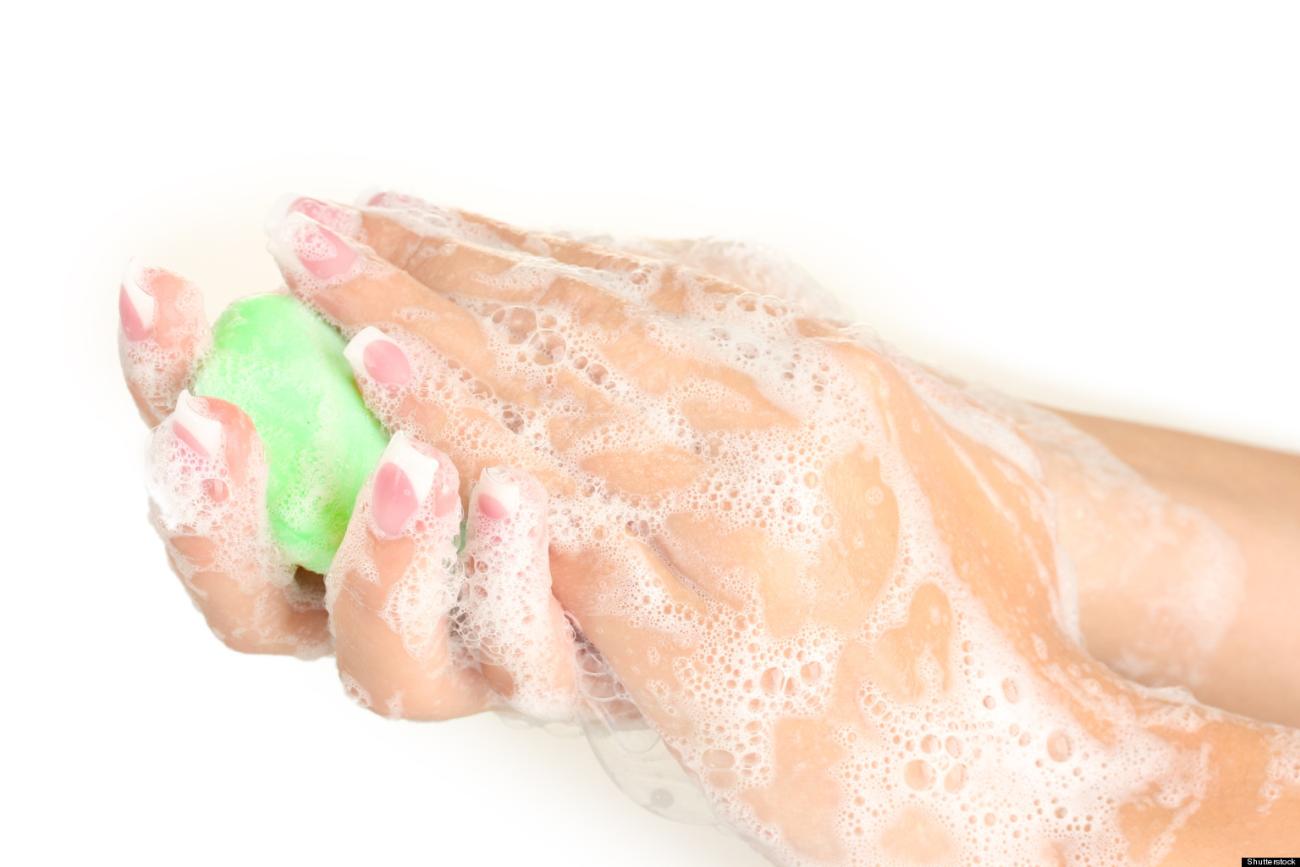Your hands are considered the front-line of your human experience – the tactile connection between you and the rest of the world.
Tactioception, or the sense of touch, also known as somatosensation, is the physiological result of the activation of neural receptors on your skin, tongue and throat when pressure, temperature changes, and pain are applied.

Hand hygiene is very important; image source: huffpost.com
Though we use our hands to pretty much do just about everything, their own health and well being often go unnoticed or misconceptions lead to bad information. Check out these 5 common hand health myths and the truth behind them:
Cracking Your Knuckles is Bad For You
Survey says, wrong! If you have grown up with your mom telling you that cracking your knuckles will give you arthritis, it’s time to do the ‘I told you so’ dance. While still debated as to what exactly causes the popping sound when you crack your knuckles – nitrogen gas in the synovial fluid surrounding your hand joints being released or small tendons snapping over bits of tissue in their path – a 2015 report illustrated with real-time magnetic resonance imaging (MRI) that the cracking sound actually emanated from cavity inception rather than the collapse of a pre-existing gaseous bubble.
That is, as the finger joints separate, there is not enough synovial fluid to rush in to fill the void and a popping sound is heard when a tiny cavity is created, kindof like a sudden vacuuming motion.
While further scientific analysis is needed of additional biomechanics occurring in the hand when you “crack your knuckles,” multiple studies have shown no correlation between cracking knuckles and arthritic affliction.
Both surveys of geriatric patients who cracked their knuckles their whole lives as well as a retrospective case control study in 2011 revealed that a history of knuckle cracking does not dispose you to arthritis later in life.
You Can “Pull a Muscle” in Your Hand
Nope! Surprise, your hand doesn’t have any muscles in it! The physical makeup of the hand includes 27 bones (phalanges) and then connective tissues, tendons and ligaments, that connect bones to others bones and bones to muscles in your arm. The muscles which control hand function are actually all in your arm.
Hand pain may result from a variety of ailments including deterioration of nerves, joints, and tendons, injury, strain, and inflammation. If you concerned about chronic hand pain, or notice numbness, tingling, or grip weakness, a trip to the doctor for evaluation is always a good idea.
Carpal Tunnel Syndrome Only Happens to the Elderly
False. The ‘carpal tunnel’ is the name for the small corridor in your wrist that passes tendons through from your arm. With repeated stress, trauma, or overuse, the carpal tunnel can become inflamed putting pressure on the median nerve which runs from your forearm through the carpal tunnel and into your hand. This swelling and pressure leads to pain, weakness and numbness in the palm side of your thumb up through your fingers (except for your pinky finger).
Many things can cause carpal tunnel syndrome according to the Mayo Clinic, including a wrist fracture which narrows the actual carpal tunnel itself, chronic illnesses that cause nerve damage (like diabetes), career long work that involves continuous wrist flexion, and fluid retention to name a few. Relief is typically found in helping relieve inflammation and stabilizing the afflicted area, like with a spica brace, to limit motion and swelling.
Washing Hands in Hot Water Kills Bacteria
Think again. “Wash hands with soap and hot water,” has been a schoolhouse mantra for decades. Turns out, if you want to kill bacteria with hot water, it has to be hotter than your skin can even handle – plus hot water can break down protective outer layers of your skin, making them more susceptible to bacteria. The Center for Disease Control actually states in their handwashing recommendations to scrub hands with soap and water (warm or cold) for at least 20 seconds to achieve an effective cleansing that helps prevent you for catching or passing on germs.
Peeling Cuticles Mean a Vitamin Deficiency
This one is a maybe. Dry skin around your cuticles combined with cracking of the skin or even fraying can be annoying and painful. Cuticles are actually composed of dead skin cells but they serve an important function in promoting nail growth and protecting the roots of your nails. Deficiencies in Vitamins C and and E, and essential B-vitamins (including folic acid and biotin) can cause dark, uneven, dry and brittle cuticles which are more susceptible to fungal infection.
Other causes of poor cuticle and nail health, however, might have nothing to do with vitamin intake. Psoriasis, anemia, and lung disease are just a few ailments that have visible side effects in the nail beds and cuticles. Dry skin, or clipping, biting and cutting cuticles can also result in hangnails, infection, and rupture of the cuticle. Protect cuticles by wearing gloves when exposed to extreme temperatures and chemicals, soak and moisturize clean hands, and avoid clipping or cutting cuticles and hangnails – use sterile scissors to snip back any frayed skin that might get caught on something, and let your fingers heal themselves.
Preconceptions about hand health – from cracking knuckles to washing with hot water – have made their way around the rumor mill for decades. A little information goes a long way to maintain strong, healthy hands into old age. High fives for busting hand myths!









































